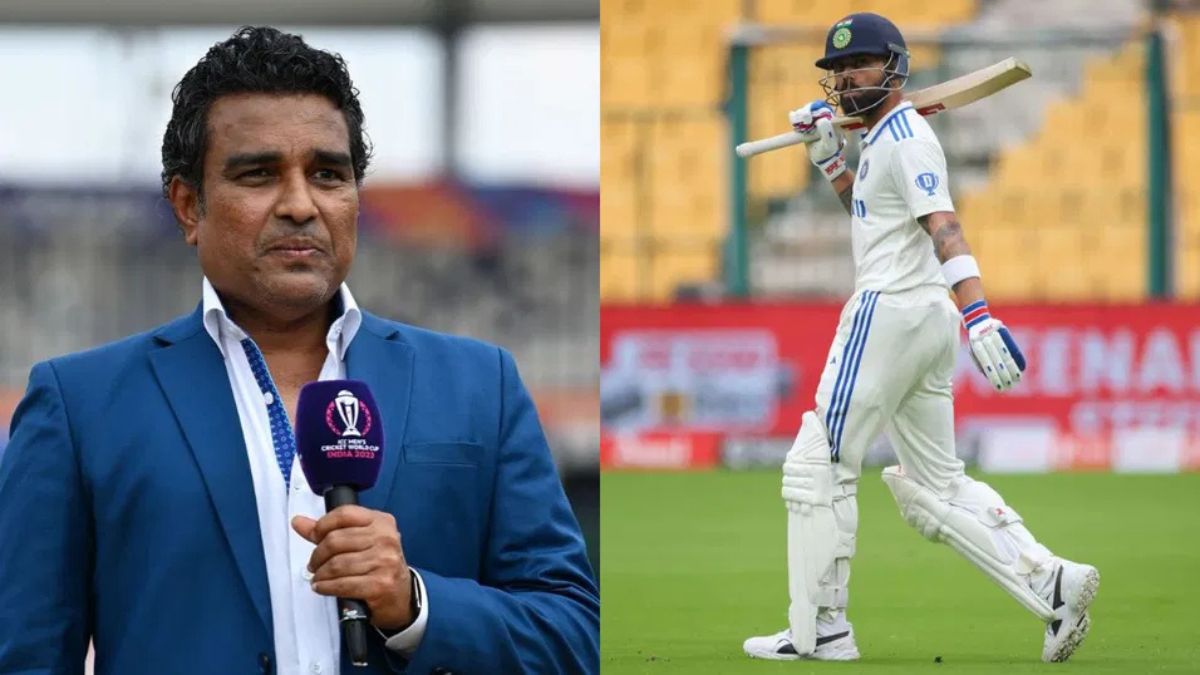India’s Virat Kohli’s struggles in the first Test against New Zealand have sparked a debate among cricket analysts and fans alike. His dismissal for a nine-ball duck in the series opener brought forth criticism, particularly regarding his persistent front-foot approach, regardless of the ball’s length. This seemingly rigid batting style has raised concerns about his ability to adapt and succeed in the longer format of the game, and the ongoing discussion highlights the complexities of technical adjustments in professional cricket. This analysis delves deeper into the criticisms surrounding Kohli’s technique, the potential consequences of his approach, and the expectations for a comeback in the series.
Kohli’s Front-Foot Dominance: A Technical Flaw?
Sanjay Manjrekar, a former Indian cricketer and renowned commentator, has been outspoken about Kohli’s reliance on the front foot. He believes this approach, while successful at times, has become a hindrance, particularly against short-pitched deliveries. Manjrekar’s assertion emphasizes that Kohli’s persistence with this approach, even when faced with short balls, is a self-inflicted issue, one that could be rectified by a more nuanced batting style that uses the backfoot more judiciously. He argues that many of Kohli’s recent dismissals stem from this inability to adapt his stance based on the bowler’s delivery.
The Short Ball Vulnerability
The criticism focuses on Kohli’s tendency to play forward even to short-pitched deliveries, resulting in edges to the slips or close-catchers. This was precisely the case in his dismissal in the first Test, where a short ball was edged to the backward short leg. This vulnerability has become more pronounced recently, as many analysts pointed out. The rigidity in his approach doesn’t allow for flexibility against changing bowling strategies. A simple adjustment to play the short-ball off his back foot would drastically reduce this vulnerability.
Back-Foot Play: The Missing Element
The commentators, critics and ex-players alike argue that incorporating a more balanced approach – one which integrates both front-foot and back-foot play – is crucial for success. They believe the complete reliance on his front-foot has negated any possibility of adaptation required in the test cricket format. By using the back foot effectively against short or bouncer deliveries, he could improve his survival rate and enhance his scoring options substantially. This adjustment wouldn’t necessarily require a complete overhaul of his technique but rather a more conscious decision-making process at the crease.
The Wider Context: Adaptation and Evolution in Cricket
Kohli’s batting style, particularly his aggressive front-foot play, has been highly successful for a large part of his career. His brilliant stroke play and powerful shots often arise from this forward movement. This highlights that abandoning the current style is not feasible or desirable; rather, he requires incorporating backfoot shots as necessary into the existing game style. However, the current criticisms indicate that a complete reliance on this single approach can lead to predictability and increased vulnerabilities in Test cricket’s varied bowling tactics.
Balancing Instinct and Strategy
The debate also underscores the inherent tension between instinct and calculated strategy in batting. While Kohli’s instinctive front-foot aggression is integral to his attacking game, a lack of strategic adaptation depending on the game situations makes him predictable. He needs to integrate calculated moves into his instinctive gameplay, enhancing his versatility and success. This balance, some critics suggest, is essential for longevity and consistent performance in the longer format.
Lessons from Past Successes and Failures
Critics draw upon instances where Kohli has played exceptionally well with a balance between back and front foot play to emphasize that this wasn’t an unforeseen phenomenon. His past success clearly demonstrates his prowess using backfoot shots to control and successfully negate pace bowlers or handle challenging bowling strategies effectively.
The Road Ahead: Can Kohli Adapt?
The focus now shifts towards Kohli’s ability to adjust his approach in the upcoming matches of the series. The challenge he faces involves not simply making a mechanical change but fundamentally altering his decision-making at the crease. A thoughtful assessment of what is being criticised might provide Kohli and the coaching staff the necessary strategies for success. The second innings of the first test and subsequent matches will showcase if he can make adjustments for a comeback or whether his rigid approach will further expose his weaknesses.
The Pressure and Expectations
The intense scrutiny and the expectations surrounding Kohli inevitably adds extra pressure. With a legacy as one of India’s greatest batsmen on the line, the ability to adopt is extremely crucial, especially in this critical stage of his career. Any adjustment made will be subject to close analysis by fans and experts, and the immediate impact on his performance could intensify this. However, that shouldn’t deter him from employing any changes or tweaks necessary.
The Future of Kohli’s Test Career
The long-term implications for Kohli’s Test career are undeniable. His batting prowess is irreplaceable in the Indian setup, and any change that successfully refines and strengthens his approach could extend his longevity in test cricket and potentially revive his dominance and legacy. If the suggested changes don’t bear fruits, further criticisms may arise from continued struggles in the upcoming matches.
Take Away Points:
- Kohli’s front-foot dominance, while effective in many situations, has become a potential weakness against short-pitched deliveries.
- A more balanced approach that includes back-foot play is crucial to adapting against various bowling strategies in Test cricket.
- The debate highlights the importance of striking a balance between instinct and calculated strategy in batting.
- Kohli’s ability to adjust his technique will significantly impact his performance in the ongoing series and beyond, and how his success dictates his future test-career.




